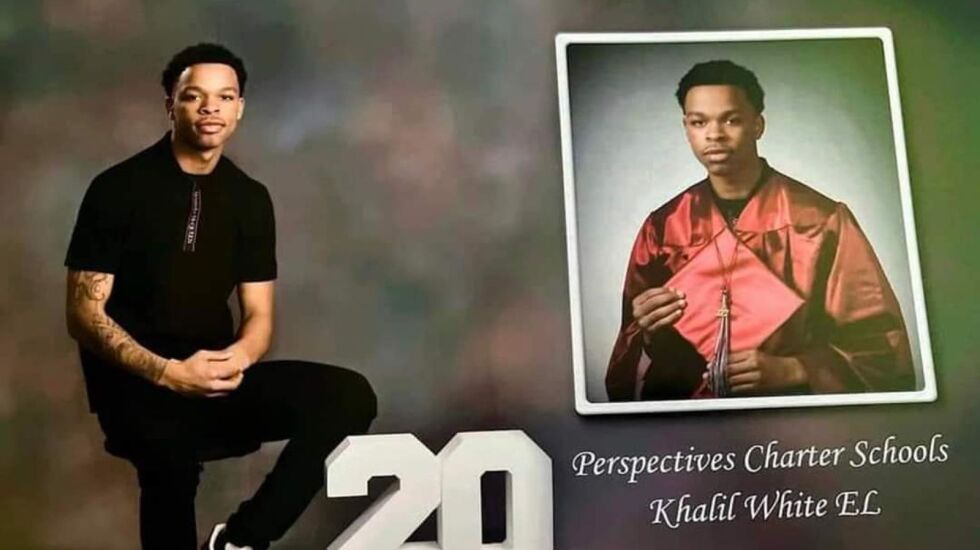
Peace. Into the night, the children smile. Their voices rise above the steady whir of bounce-house fans and the deep, incurable pain that is not as easily detectable here, though its presence is undeniable. Like the water that ripples in soft waves at a nearby park fountain.
Like the mothers of murdered sons and daughters who don “Purpose Over Pain” T-shirts — decades of grief shared between them. Like the enthusiasm of Khalil White, 18, who bubbles with excitement over his new job — his future as bright as his infectious smile.
Peace. It flows here, on an August Friday night at Renaissance Park on West 79th Street. Drifting upon a premature autumn wind is a sense of the way life is supposed to be, even on this side of Chicago, where gunfire and murder confiscate childhood.
Here, Black Lives Matter protesters are MIA when it comes to Black lives taken by Black killers. But here each summer the Faith Community of St. Sabina takes its vigil for peace to the streets.
A thousand people flocked to Renaissance Park for games, treats and backpacks at St. Sabina’s back-to-school block party, which signals an end to the church’s annual “Friday Night Peace Walks” led by the Rev. Michael L. Pfleger, the church’s senior pastor.
The summer marches snake through the streets, undeterred by the recalcitrance of violence and the toll on the psyches and souls of those who dwell in the valley of the shadow of death.
Around here, they live with the reality that Black lives in this city and nation still don’t matter as much as white lives. With the quantifiable truth that frequent mass shootings in Englewood, West Garfield, Austin or Auburn Gresham don’t garner the same headlines or sense of urgency or loss as a single mass shooting in Highland Park.
What’s the difference? Don’t we all bleed the same? Doesn’t every human soul carry the same worth?
Is the life of a Black child shot to death on the South Side or West Side somehow made less valuable by her ZIP code or race? Does the prevalence of shootings in poor, urban neighborhoods make the violence there somehow more acceptable, normal?
On the South Side and the West Side, gun violence is a fact of life. So far in 2022, Chicago has averaged about four mass shootings a month, all but three occurring on the South Side or West Side, according to the online Gun Violence Archive.
A total of 31 mass shootings in Chicago through Aug. 20, with at least 130 people injured and 14 killed. Two mass shootings last weekend raise that figure to at least 140 shot.
But that’s not the whole story.
According to police records, there were 425 homicides in Chicago through Aug. 22 and 1,828 shootings, compared to 519 homicides and 2,239 shootings — an 18% decline in both — during the same period in 2021. But any impact of a dip in gun violence is hard to measure. Or feel.
“We shouldn’t feel good about a small decrease,” Pfleger told me. “Also, people do not feel safer. In fact, my take: They feel less safe.”
The weekend turned out to be another deadly one, with 38 people shot, four of them killed, according to police.
Peace is elusive. Yet, at Renaissance Park that evening, a little girl stands in front of the glowing popcorn machine among scores of children — the white smoke of giant barbecue grills carrying the scent of burgers and hotdogs and normalcy.
Four days later, on Tuesday, Khalil White — a member of St. Sabina’s Strong Futures Mentoring Program who had shared his excitement over his new job at the block party — was gunned down about three miles away in a South Side alley.
Khalil was 18. His funeral service at St. Sabina is pending.
The family was planning a balloon release at St. Sabina’s peace march this Friday evening.
Balloons for Khalil. And prayers for peace.
“Invasion of Faith: Faith vs. Violence,” a multimedia journalism project, chronicled St. Sabina’s Peace March last summer and can be viewed at www.invasionoffaith.com
#JusticeForJelaniDay







